There is a beautiful, tree-lined boulevard in Merida, Yucatan called Paseo de Montejo. It provides four lanes for traffic separated by a wide median planted with shrubs and flowers. The sidewalks are wide enough for two further lanes of traffic each way and are interspersed with statuary, benches, conversation chairs and trees. Notwithstanding its charm, the street is not the equal of the mansions that face it. There are dozens of stately homes dating from the beginning of the twentieth century; most of which are in impeccable condition.
Naturally the presence of such opulence begs the question: what gives? In a country as poor as Mexico, why is there so much extravagance in Merida and why does it all date from 100 years ago? The answer is found in an American invention and a plant called henequen.
Around the middle of the nineteen century, a work averse American invented a machine that could mechanically bale and wheat and hay. It became an instant but short lived success. The only available method of tying the bales was with steel wire which, when ingested by the cows, immediately caused their demise. A less lethal binding agent was of utmost importance and henequen was the answer. Henequen is a member of the agave plant family and looks much like the top of a pineapple except the leaves are roughly six feet long. It grows wild throughout the northern Yucatan and is quite an amazing plant. It can thrive in the rocky limestone ground of the Yucatan with virtually no water or fertilization. This is a good thing since the Yucatan is totally devoid of any surface water. There are no lakes, rivers or ponds. Any rainfall quickly seeps through the limestone surface and is contained in underground rivers and in springs known as cenotes. Henequen has a cousin that is used to produce tequila and another cousin that is the source of aloe vera. Henequen’s virtue is its yield of a fibre that can be spun into rope.
The Maya produced fibre from the henequen plant since the time of Christ. They carefully peeled off the outer green covering of the leaf and mashed the pulpy interior to get at the fibre. Only five percent of the leaf was fibre and the rest was waste pulp and water. The plant grows wild in the areas surrounding Merida and demand for the fibre led to a budding new industry. Unfortunately, the demand was insatiable and the old Mayan extraction methods couldn’t keep up. The Americans needed more and more. (Does oil come to mind?) The Yucatan government initiated a contest of sorts to develop a mechanical means of extracting the fibre and soon a sophisticated but simple machine was developed that removed the skin, the water and the pulp from the leaves in a single process and churned out the fibre. The industry took off and roughly 650 families were fortunate to have henequen ranches and the concomitant fortunes. Not content to live on ranches far removed from the bright lights of Merida, these barons of henequen brought their money to the city and built lavish French style mansions. They lived lives of magnificent opulence and, by the beginning of the twentieth century; Merida had the distinction of hosting more millionaires per capita than anyplace on the face of the earth.
Alas, the industry is no more. In 1915, it fell victim to the Mexican revolution of 1910. As the Yucatan came late to Mexico, the Mexican revolution came late to the Yucatan. A general from the new government rode into Merida with the intent of implementing land reforms by breaking up the hacienda system. Productivity dropped dramatically and the price of henequen fibre for export rose 400%. The Americans were unwilling to pay this price and promptly found an alternative source of fibre in Brazil. The industry went into steep decline and by 1950 the countryside was littered with abandoned henequen haciendas.
Today, with renewed interest in natural fibres and the high cost of petroleum, henequen is enjoying resurgence. A very few of the old haciendas have been restored to their former glory. The 100 year old equipment is operational again and pounding out henequen fibre. As an intentional time warp, the employees dress and work just as their great grandfathers resulting in old industry revival and a new industry as tourists flock to see history replayed.
The haciendas are remarkable living things. In their day, they were essentially company towns. To attract workers, the owners supplied housing, churches, medical care and the infamous company store where employees has to spend their hard earned wages. Before long, the employees were deeply in debt and in reality were indentured slaves.
Men either worked in the fields or in the production plants. The workers took great pains to cultivate the henequen plants in straight rows over hundreds of acres. A henequen plant takes seven years before it produces leaves with fibre content. It will live a total of twenty years, after which a huge spike like trunk emerges from the centre of the plant and it dies. In its death throes, it produces seven off-springs which are duly planted to keep the process going. Each year, only five to seven leaves can be cut from a mature plant for processing at the plant.
To get the leaves from the fields to the plant, extremely light gauge rail, very reminiscent of a Lionel train set, was installed throughout the fields. Wagons full of leaves are hauled by mules that skitter from one side of the track to the other in a show of exertion. The sight gives an entirely Mexican meaning to the term mule train. Today, the same wagons do double duty hauling tourists around the hacienda.
The leaves are taken to a two storey production plant that is not much greater than 20 feet by 40 feet. The equipment is on the second floor. Leaves are placed on a mechanical ladder which takes them to a conveyor belt where four men ensure that they are right side up before entering a processor which is probably no more than two feet wide. Whatever happens in that short distance, I have no idea but the only thing to emerge at the other side is a bundle of sopping wet fibre that is bound and dropped down a railing to the ground level. The pulp is disbursed out of the bottom of the machine and drops into a hopper car for transfer to the largest compost pile you will ever see. The water is also captured and sent to a sprinkler system that blesses a small patch of grass.
The fiber cannot be processed until dry and a team of men on the ground floor hang it on iron rails. Picture a million blonde witch’s wigs on clothes lines. Once dry, the “sisal” is sent to a baling plant for preparation for shipment to plants that make rope, shopping bags and other assorted product.
I have to confess that the history of the henequen industry was fascinating to me. The wealth, the opulence, the rise and the fall and the hardships of the working families have the makings of a great novel or a TV series like Dallas. Surely someone will take up this challenge.
POST SCRIPT
A highlight of visiting an operating henequen ranch in Merida is a visit to a cenote. A community as large as a hacienda needs a reliable water supply. This is provided by underground rivers and lakes that exist throughout the northern Yucatan. At the particular ranch we visited, a set of stone stairs descended about 20 feet to a small opening in the roof of a cave. The bottom of the cave was filled with crystal clear water which had a depth of 6 to 22 feet. Wooden stairs took us to the water’s edge and we were permitted to swim. Towels, goggles and life jackets were provided. The cave was lit with low ambient electric lights. Stalactites descended from the ceiling although most had been cut to prevent injury to visitors. The water was an absolutely perfect temperature and the eerie silence of the cave provided a really special sensation.

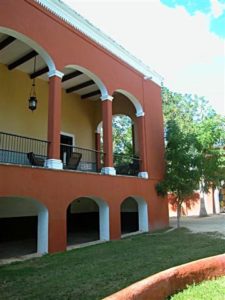
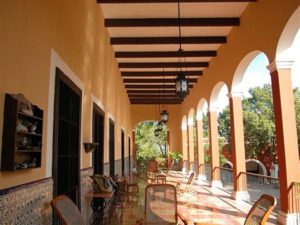

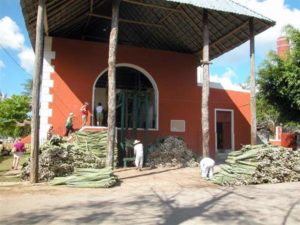
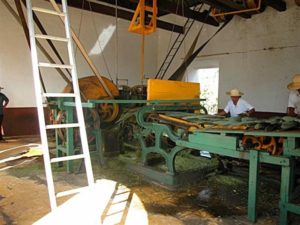
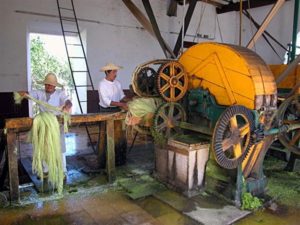
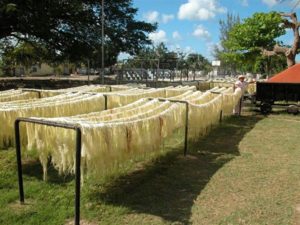
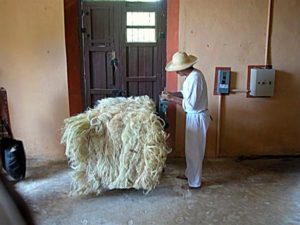
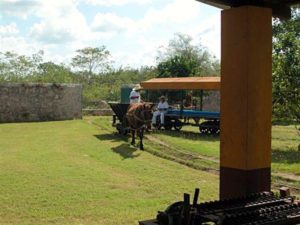
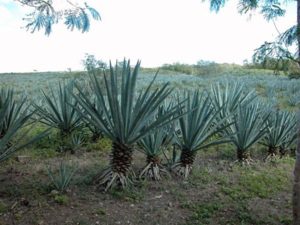
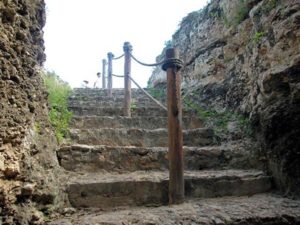
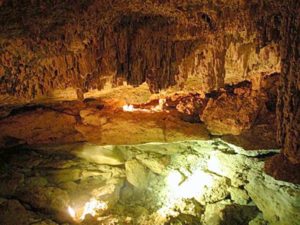




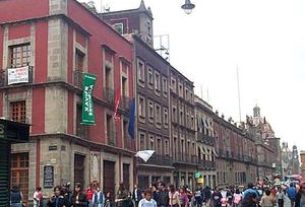
Just wanted to let you know that Mexico is not as poor a you say, in your comments!!
You have to travel more and read more History about my country!
Interesting that you say (in your article) that this slice of history would make for a good novel. I agree. The reason I was reading your article is for research that I am doing for just such a novel. Something along the lines of the book MEXICAN GOTHIC.
Thanks for your interesting comment. Make sure you let us know when your novel is published!
A huge chunk of history is missing from this sanitized story. The Hennequin trade was built on the backs and lives of indigenous Yaqui slave labor. They were imported to the Yucatan by the Mexican government and sold as slaves to the owners of the Hennequin plantations.
“By 1908, at least 5,000 Yaqui had been sold into slavery.[14][15] At Valle Nacional, the enslaved Yaquis were worked until they died.[14] While there were occasional escapes, the escapees were far from home and, without support or assistance, most died of hunger while begging for food on the road out of the valley toward Córdoba.[14]
At Guaymas, thousands more Yaquis were put on boats and shipped to San Blas, where they were forced to walk more than 200 miles to San Marcos and its train station.[14] Many women and children could not withstand the three-week journey over the mountains, and their bodies were left by the side of the road.[14] The Mexican government established large concentration camps at San Marcos, where the remaining Yaqui families were broken up and segregated.[14] Individuals were then sold into slavery inside the station and packed into train cars which took them to Veracruz, where they were embarked yet again for the port town of Progreso in the Yucatán. There they were transported to their final destination, the nearby henequen plantations.[14]
On the plantations, the Yaquis were forced to work in the tropical climate of the area from dawn to dusk.[14] Yaqui women were allowed to marry only non-native Chinese workers.[14] Given little food, the workers were beaten if they failed to cut and trim at least 2,000 henequen leaves per day, after which they were then locked up every night.[14] Most of the Yaqui men, women, and children sent for slave labor on the plantations died there, with two-thirds of the arrivals dying within a year.”[14] (https://en.m.wikipedia.org/wiki/Yaqui)